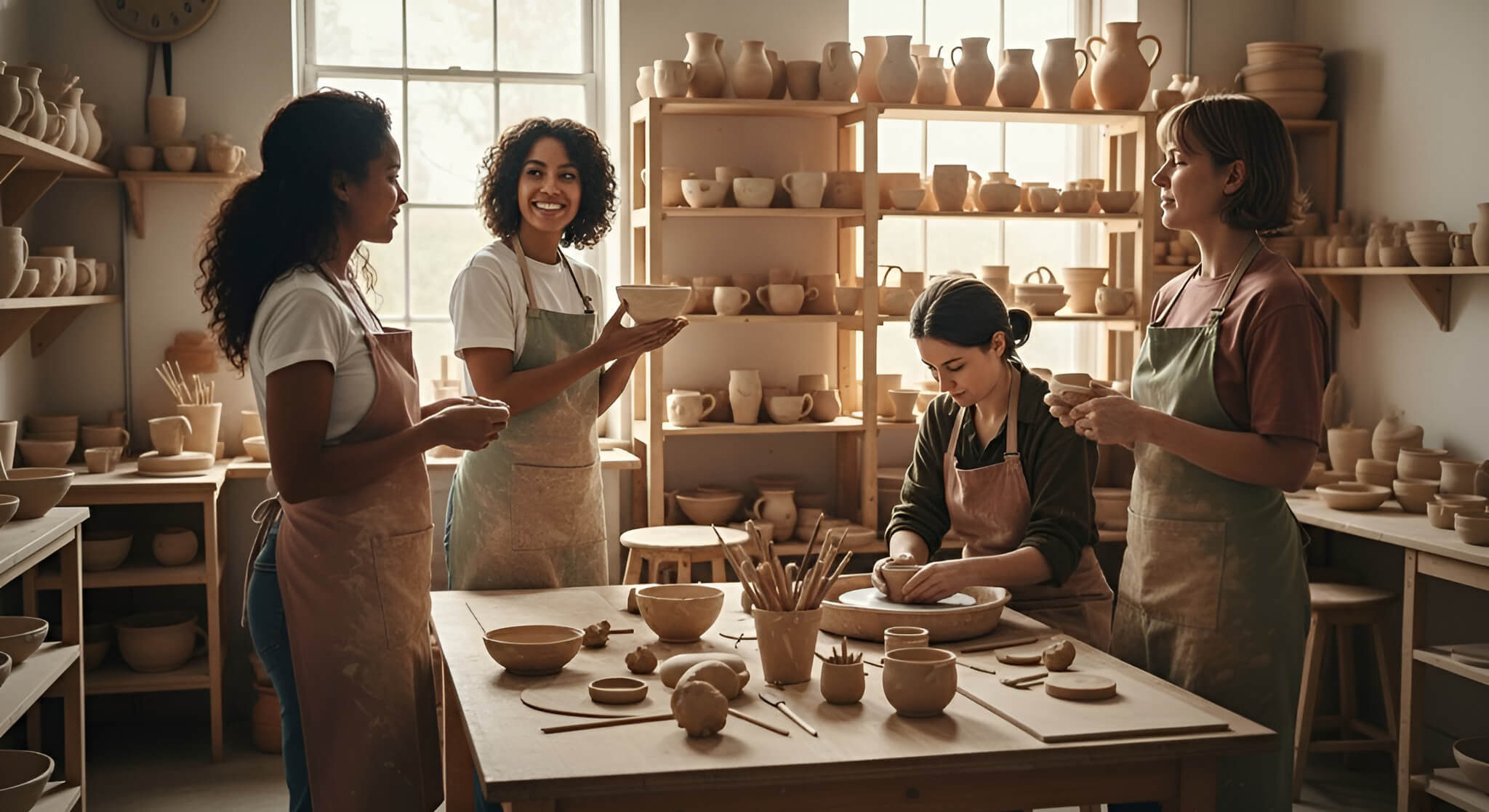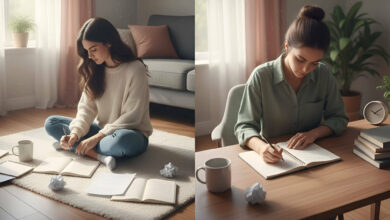Can Taking an Art Class (Like Pottery) Help Improve Body Confidence?
Table of contents
- The “Confidence Trap”: When Focusing on Your Body Makes It Worse
- The Psychology: From “Self-Objectification” to “Embodied Creation”
- The Science: How Pottery Rewires Your Brain for Calm and Acceptance
- The At-a-Glance Comparison Table: Two Paths to Confidence
- The Verdict: A Creative Path to Self-Acceptance
The “Confidence Trap”: When Focusing on Your Body Makes It Worse
To “fix” our body image, we’re often told to focus on our bodies: go to the gym, start a new diet, buy new clothes. But for many, this just amplifies the self-scrutiny and the feeling of “not being good enough.” It keeps us in a state of anxiety and constant comparison.
But what if the secret to making peace with your body isn’t to focus on it at all? What if it’s about forgetting it completely and discovering what it can do?
This is the profound, surprising power of a tactile, creative art class like pottery. We’re exploring the science of why this hands-on, non-body-focused activity might be the most effective “trick” you’ve never tried for building true, lasting self-acceptance.
The Psychology: From “Self-Objectification” to “Embodied Creation”
The Problem: The “Observer” Mindset
A poor body image is often rooted in “self-objectification”—the habit of viewing your body as an object to be looked at and judged by others. This creates a state of chronic anxiety where you are constantly monitoring your own appearance.
The Solution: The “Creator” Mindset
A tactile art like pottery forces a radical shift in perspective. You move from being an observer of your body to an inhabitant of it. Your focus is no longer on, “How do my arms look?” but on, “What are my hands doing?” You begin to appreciate your body as a powerful and capable tool for creation, not just an ornament to be critiqued.
The Science: How Pottery Rewires Your Brain for Calm and Acceptance
1. It’s a Form of Active Mindfulness
Working with clay is a deeply sensory, “grounding” experience. You can feel the cool, damp earth in your hands, the spin of the wheel, the pressure of your fingers. It requires your full attention on the present moment, which is a known technique for calming the amygdala (your brain’s ‘fear center’). As research on the benefits of art therapy confirms, this kind of creative engagement can significantly lower the stress hormone Cortisol and improve your mental health.
2. It Teaches You to Embrace Imperfection
Pottery is an exercise in letting go of perfection. The clay will wobble, the pot might slump, the glaze might drip in an unexpected way. The process teaches you to find beauty and character in these “flaws,” a powerful lesson you can then apply to your own self-perception.
3. It Creates a New Source of Self-Worth
At the end of the class, you have a tangible, physical object—a mug, a bowl, a sculpture—that you created from a simple lump of mud. This provides a profound sense of accomplishment and pride that is completely separate from your physical appearance. You are building self-worth based on your capability, not your looks.
The At-a-Glance Comparison Table: Two Paths to Confidence
| Feature | The “Appearance-Based” Path (e.g., a diet) | The “Embodiment” Path (e.g., pottery) |
| Primary Focus | The Body as an Object (Form) | The Body as a Tool (Function) |
| The Goal | To “Fix” or Change Appearance | To Create & Experience |
| Common Emotion | Anxiety, Stress, Comparison | Focus, Calm, Accomplishment |
| Resulting Self-Worth | Conditional (on results) | Unconditional (on the process) |
This shift from the “Appearance-Based Path” to the “Embodiment Path”—focusing on the body as a tool (Function) rather than an object (Form)—is a powerful strategy. It’s the core body confidence lesson from champions who have mastered this mindset.
The Verdict: A Creative Path to Self-Acceptance
So, can a pottery class really improve your body confidence? Yes, and perhaps more deeply than many methods that are directly focused on your body. It’s a powerful antidote to the stress of self-objectification.
True body confidence isn’t about finally loving the way you look in the mirror every single day; it’s about diminishing the power of that critical inner voice. By giving your mind a joyful, tactile, and creative task, you are simply giving it something better to do than obsess over your reflection. It’s a beautiful act of rejuvenation and a profound way to discover that you are, and have always been, so much more than your body.






